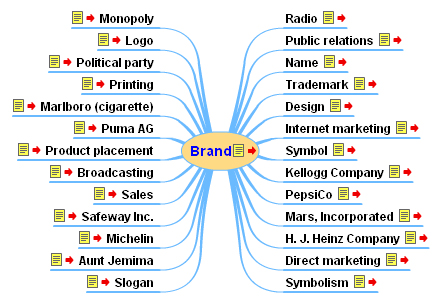
By achieving synergies, merged firms can profit by realizing results such as increased revenue and market share, a reduced tax burden, or combined technology. For buyers it is even more important to clearly understand the potential synergistic benefits of an acquisition prior to a close. Clear insight into both revenue and cost synergies drives a conversation around valuation.
Avia Solutions Group To Launch A UK Based Wet-Lease Airline – Simple Flying
Avia Solutions Group To Launch A UK Based Wet-Lease Airline.
Posted: Mon, 17 Jul 2023 07:00:00 GMT [source]
The elimination of cost redundancies can relate to processes, personnel, maintenance and operation of capital, distribution, and marketing. Combining the best practices of the different entities and driving more volume through processes create scale efficiencies. Combining the purchasing power of two or more entities, and the transparency of actual costs and prices paid by the different entities drives negotiating leverage over suppliers and partners. When two different entities bring together disparate, but complementary assets, they often create synergies. Synergies may not necessarily have a monetary value but could reduce the costs of sales and increase profit margin or future growth. In order for synergy to have an effect on the value, it must produce higher cash flows from existing assets, higher expected growth rates, longer growth periods, or lower cost of capital.
EXPLORE OTHER TYPES OF STRATEGY
Here are some of the best practices for evaluating synergies and realizing their value. Or, the flip side happens when a large company acquires a small company with established distribution and presence in an emerging market. The large company can leverage the small company’s established distribution and presence in the emerging market. Two market leaders that merge can also create revenue synergy by restricting supply and increasing prices. I’m going to save you the time and money of sitting through a ten-week MBA course on mergers & acquisitions (sorry Professor Thorburn).
Understanding how and when these synergies will be realized is important in developing a deal structure that helps ensure that the synergies are captured appropriately. After the merger, the company gets a strong asset base that has also merged from two formerly separate organizations. This helps the new company gain access to debt and it will also be able to save on taxes. Analysts typically use financial synergy to evaluate companies during M&A transactions. This is because financial synergies represent the growth of a firm’s financial performance when two companies combine. As you evaluate potential investments, partnerships, and consolidations of teams or groups, you need to think through and analyze the potential revenue, cost, capital, and other financial synergies of combining entities.
What is Synergy?
It always takes time to gain awaited results, and all the parties involved in synergy analysis should realize that. Let’s explain cost synergies with the help of the before-mentioned example. Revenue synergies most commonly occur between companies that sell in the same industry. Synergies can often be easy to identify but hard to realize; types of synergy therefore, it is critical to understand when the deal closes, there is still a great amount of work to be done to yield the identified benefits. Another option is to using a valuation spreadsheet, compare the inputs and outputs of the acquirer, the target, to the combined inputs and outputs if the two companies were to merge.
Merging companies in separate locations can gain geographical access to each other’s customers, resulting in more sales. Synergy is often used to measure the positive effects of business mergers and acquisitions (M&As). As two US oil companies, they possessed several assets that were essentially overlapping each other and could be sold, including refineries and 2,400 service stations. In addition, a total of 16,000 people were laid off, allowing the company to generate cost synergies of over $5 billion.
Synergies: Concepts in Finance and Examples
The newly combined company can account for the synergies achieved by an M&A transaction by recording it on its goodwill account and balance sheet. Mergers and acquisitions consolidate companies or their assets through certain financial transactions. It is important to be conservative once you start calculating and estimating potential value generated from synergies. While the magnitude of the synergies is what often provides the sizzle for combining two entities, the magnitude often fizzles in trying to harvest the synergies.

Synergies not only provide that short-cut, but also offer an excellent means through which the benefits of the deal can be communicated to shareholders and investors. Since the PV of Synergies is higher than the Control Premium Paid, the value created is 60 million. When customers receive information about a company through different messaging pathways, the brand has greater influence, and they are more likely to engage with the brand. To get you going on understanding the full breadth of synergies for a new project, product, service M&A, or consolidation, download the free Synergy PowerPoint Worksheet.
Cost reduction is a simpler way to achieve synergy, it is achieved through economies of scale and lower unit prices. Companies increase the specialization of labor and management, which helps to use equipment more efficiently. With marketing synergies, the newly formed company can enjoy new marketing benefits for their product or service. A firm must understand the different types of synergies and their effects to optimize their M&A deals. The logic tree, on the previous page, can serve as a great starting point to brainstorm some potential synergies between two or more entities. As you brainstorm, also evaluate, at a high level or level of magnitude, the potential value, and difficulty in realizing the synergy.
The ability of a management team to identify and extract the expected synergies plays a major role in the success or failure of an acquisition. Consolidation in the industry will continue, even in the face of increasing rates, because the financial opportunities far outweigh increased borrowing costs in the short term. A very richly-valued acquisition can appear moderately priced after taking into account the impact of revenue and cost synergies post close. Spin-off and carve-out deals are another type of restructuring deal, where a company separates a business unit or subsidiary from its parent company. The drivers of these synergies depend on the motivation, timing, and structure of the separation. To estimate and evaluate these synergies, analysts typically use valuation methods such as the sum-of-the-parts (SOTP) model, the relative valuation method, or the pro forma analysis.
Define the three types of synergy that may result from mergers. What are the sources of these…
Marketing synergy refers to the marketing benefits that two parties in an M&A transaction may enjoy when promoting their products and services. These synergies include information campaigns, marketing tools, research and development, as well as marketing personnel. Corporate synergy refers to the benefits that two firms are expected to gain when they merge or when one firm acquires another. The synergistic effect of such transactions often forms the basis of the negotiations between the seller and the buyer.

This could result if the merged firms experience problems caused by vastly different leadership styles and corporate cultures. When two companies merge, there is no longer a need to pay two salaries for each position. Merged companies have more access to supply chains, making this process more cost-efficient. Revenue synergy refers to the additional revenue that companies generate after merging.
Types of Synergies – Revenue Upside
There are many examples of successful company mergers and acquisitions, and the reason behind their success is the identification of synergies early on. Such strategic actions create economies of scope by exploiting each party’s resources and capabilities. On the other hand, when the newly combined companies do not work in harmony, this can create new conflicts. As a result, the company’s goods and services may decline in quality, there may be a reduction in operational efficiency, and there may be poor resource utilization.
- Synergies can often be easy to identify but hard to realize; therefore, it is critical to understand when the deal closes, there is still a great amount of work to be done to yield the identified benefits.
- When it comes to synergies, it’s always better to understate them before the deal.
- Marketing synergy refers to the marketing benefits that two parties in an M&A transaction may enjoy when promoting their products and services.
Almost all value generating M&A transitions have synergy at their core (hence the reason why it’s the favoured motive of chief executives to justify their deals). The Disney acquisition of Pixar (and later, Marvel) may be the textbook example for finding good synergies, but for the sake of variation, the Facebook acquisition of Instagram in 2012 also takes some beating. The integration phase of anM&A transaction is essentially about getting to the synergies of the deal as quickly as possible. There is now universal agreement that, where integration is concerned, speed is everything.
Types of synergistic effects
Additionally, supply chains can become more efficient and the new, larger company can usually negotiate better prices from suppliers. More specifically, McKinsey & Company notes challenges, such as developing appropriate targets and executing new workflow and sales strategies across all functions, make revenue synergies more difficult to capture. Synergy often involves two entities or parts with complementary resources or capabilities. It then brings mutual benefits, especially when joint work or activities support the same goal. Be cautious when evaluating financial synergies, however, as studies have demonstrated that these synergies tend to be illusive. A firm can use multiple earnings (like EV/EBIT) to represent the long-term growth rate of synergies.
Beyond the complexity that often gets in the way of realizing synergies, there are often difficulties in realizing revenue synergies. As you assess revenue synergies, it is critical to look at the synergies from the view of a customer. As you think about revenue synergies, you have to think through if it makes sense from a customer perspective. And, to understand the potential fit and value, you can always conduct focus groups and surveys to understand the customer perspective on potential synergies. The term synergistic is derived from synergy, which refers to the benefit that results from the merger of two agents who want to achieve something that neither of them would be able to achieve on their own.
0 Comments